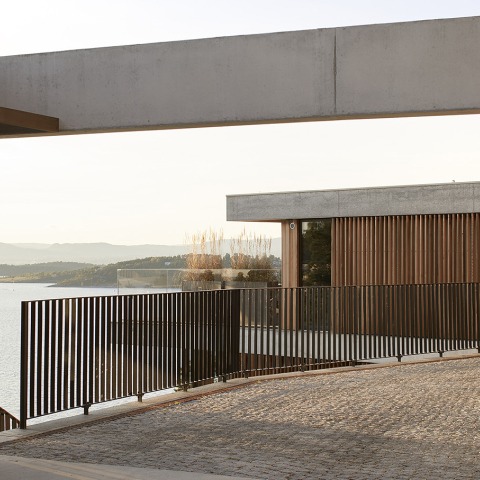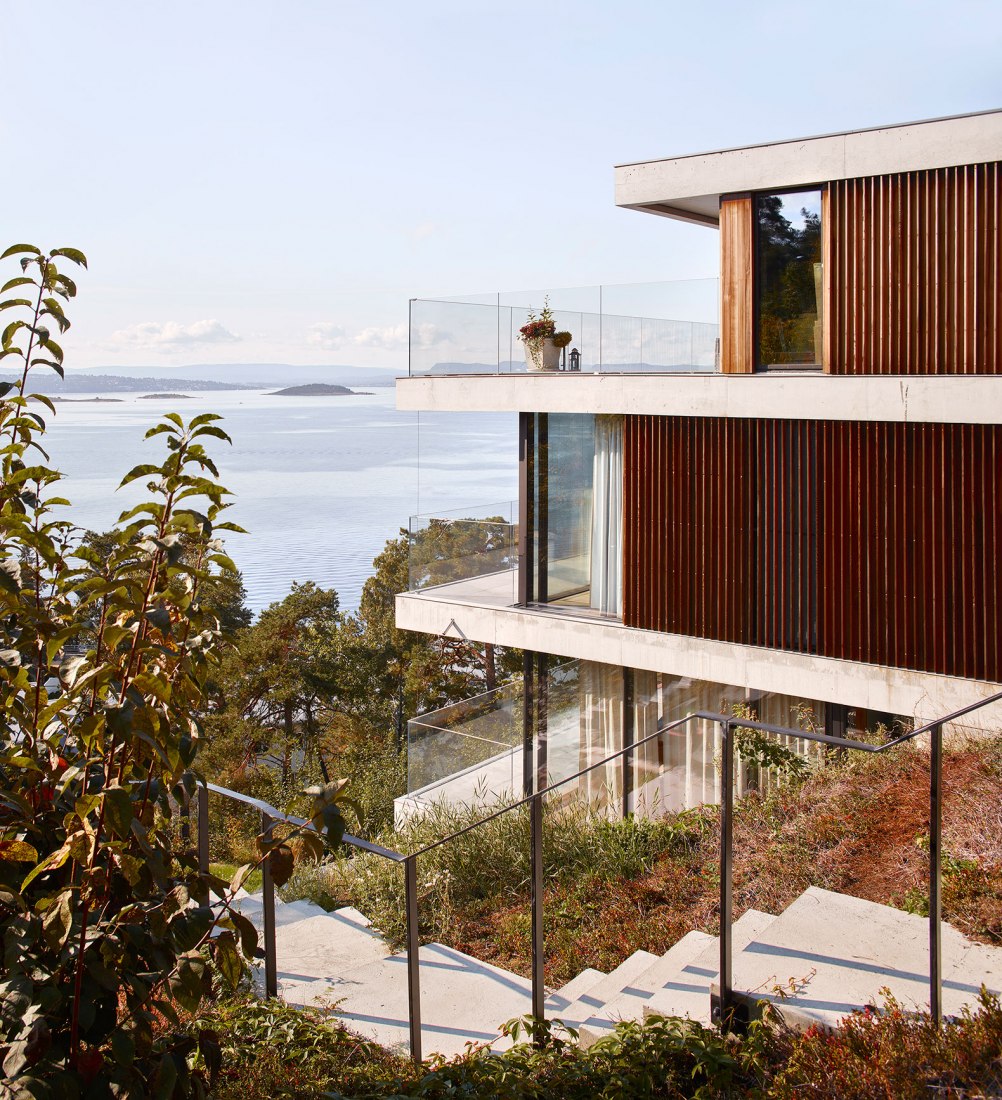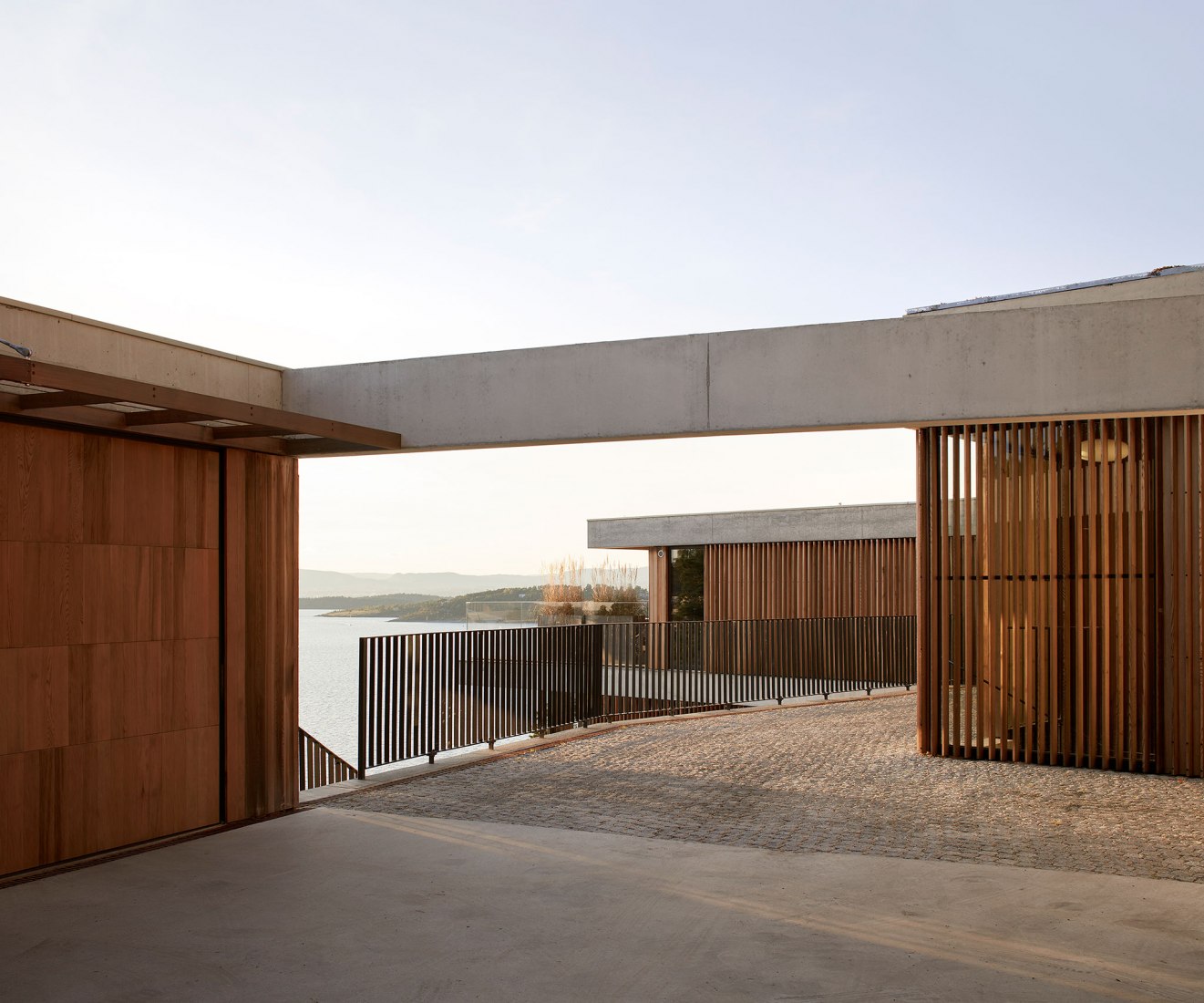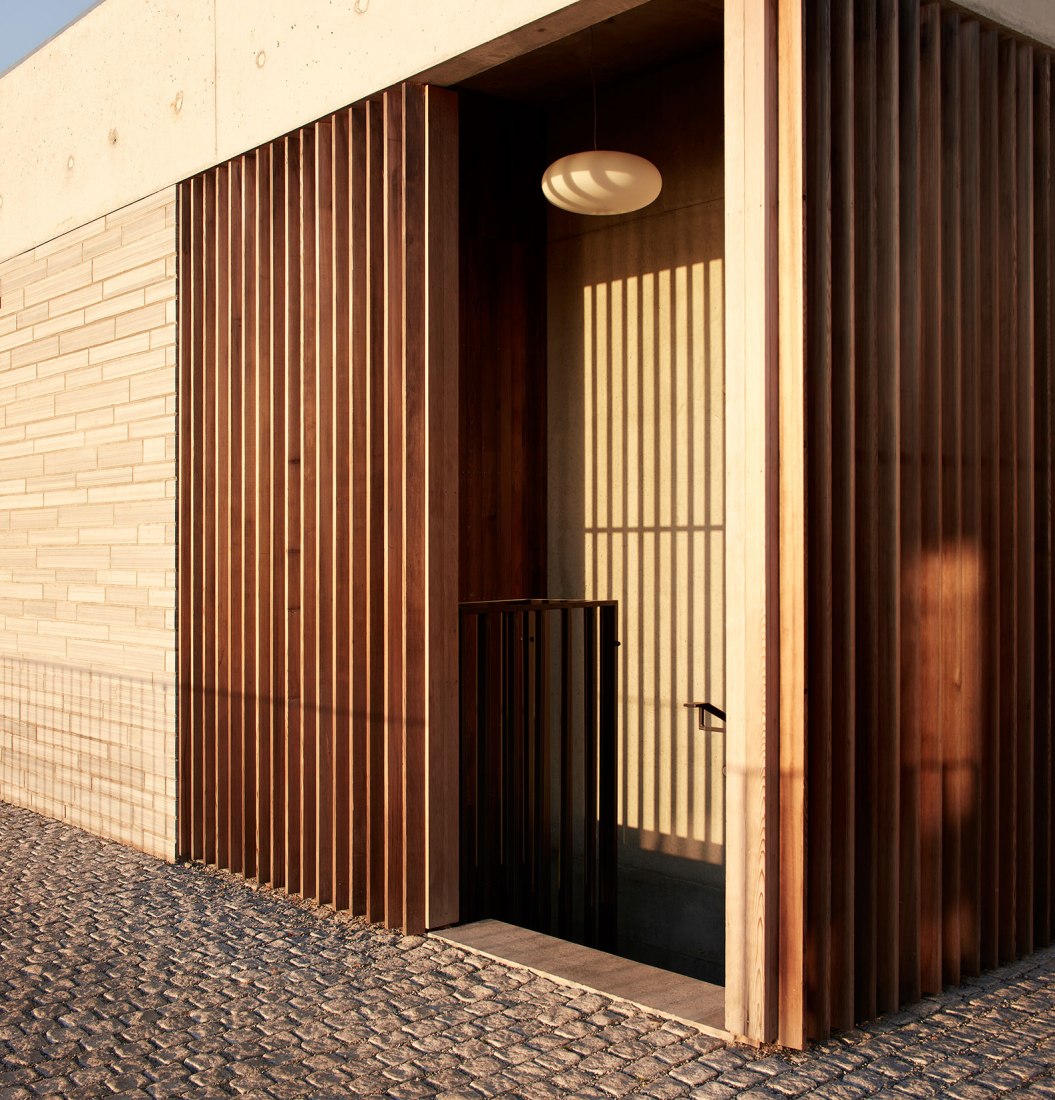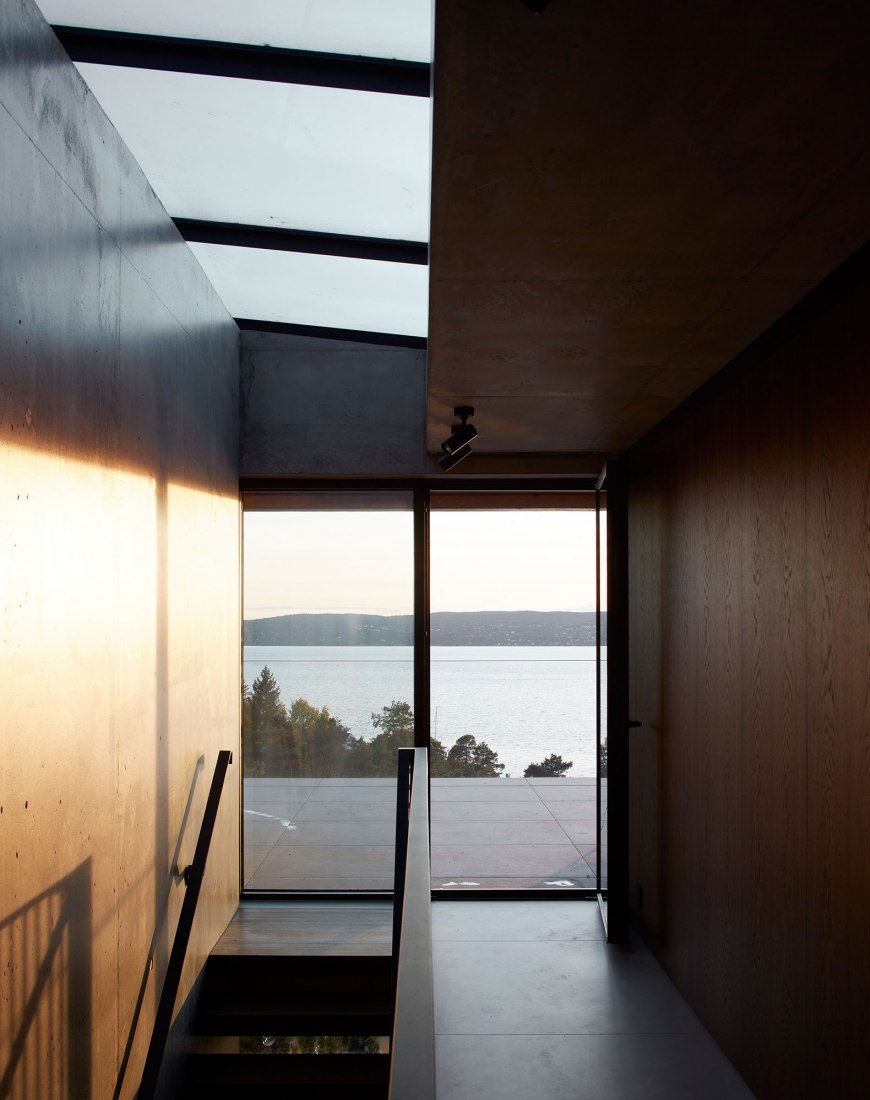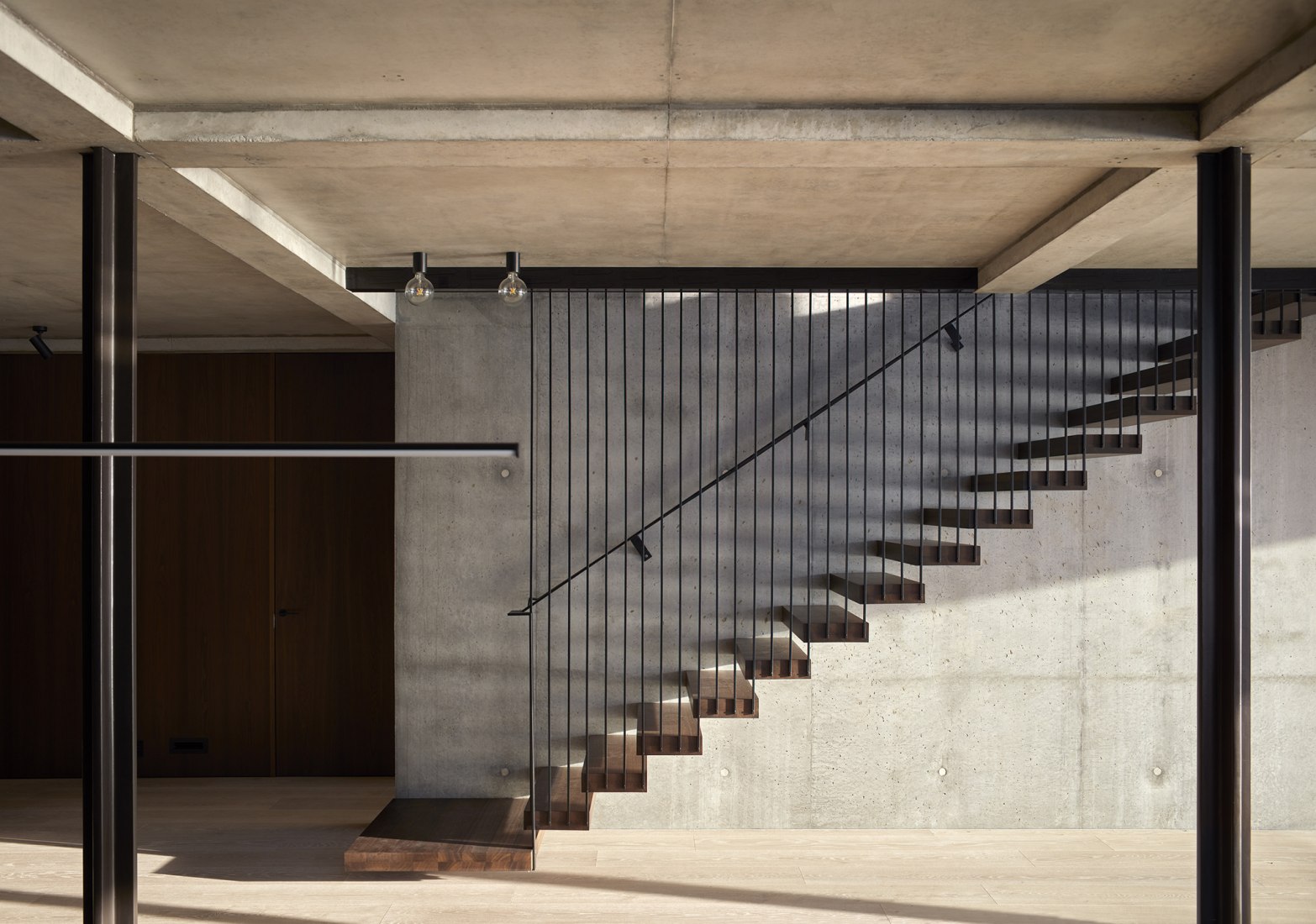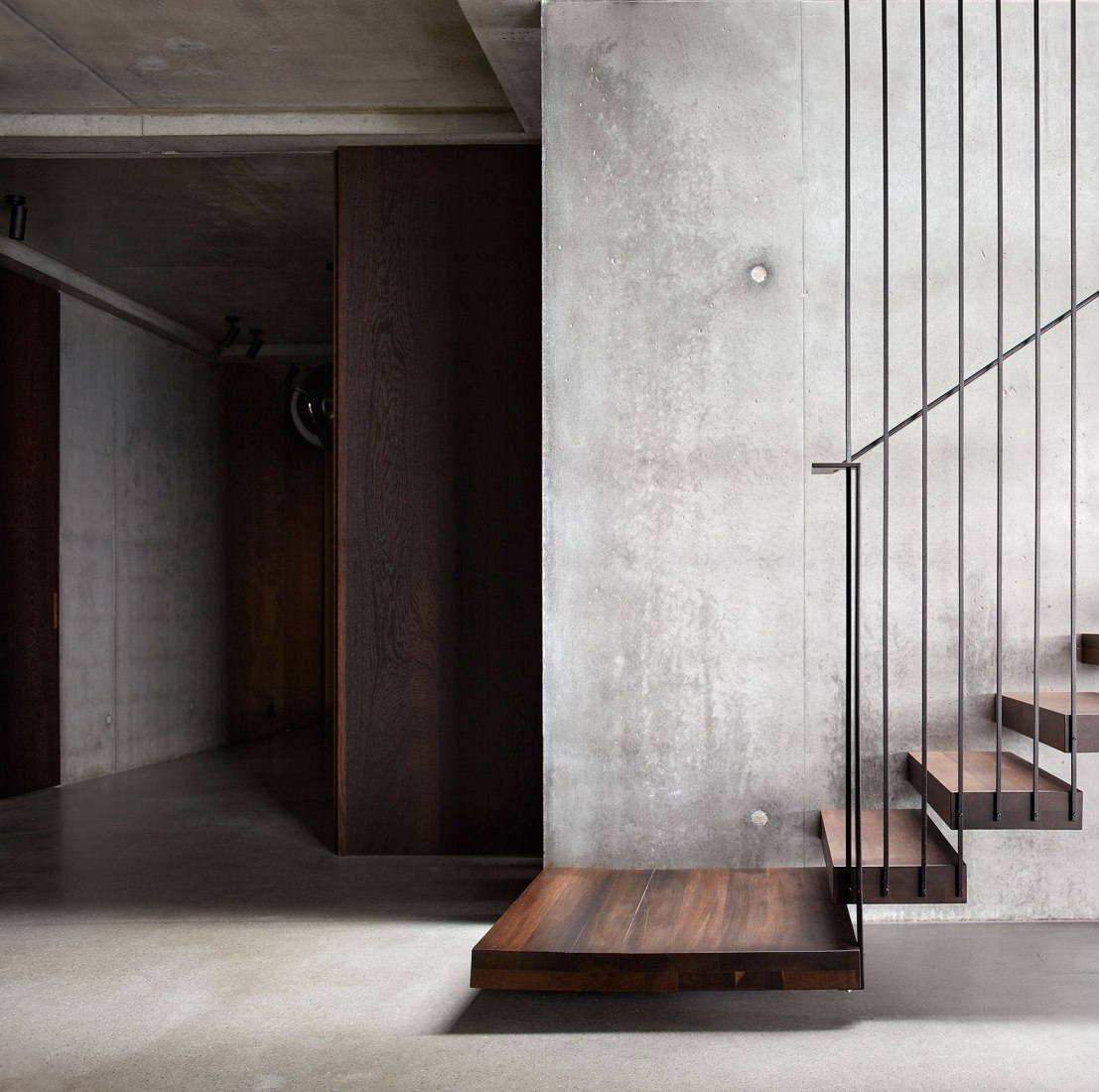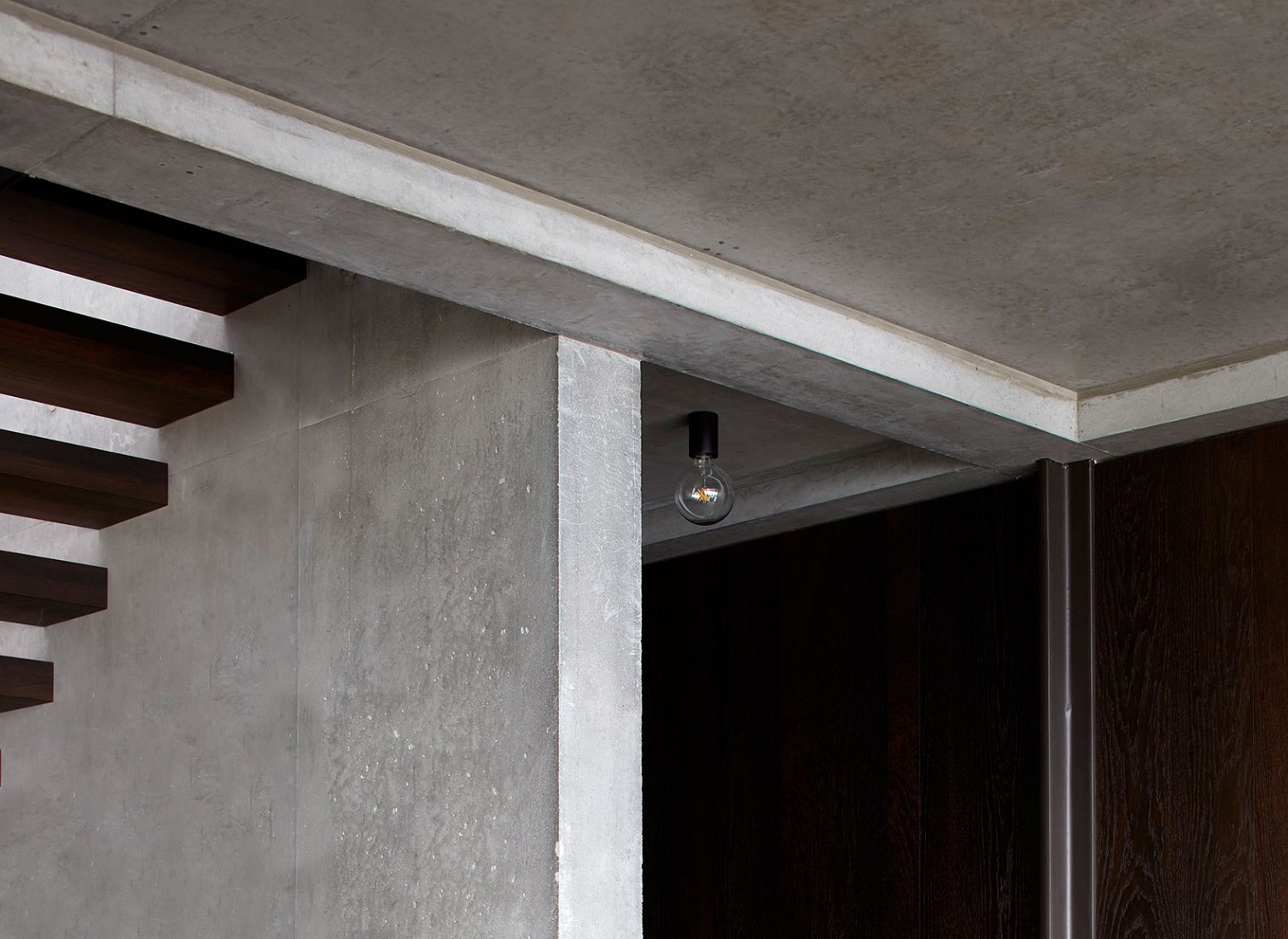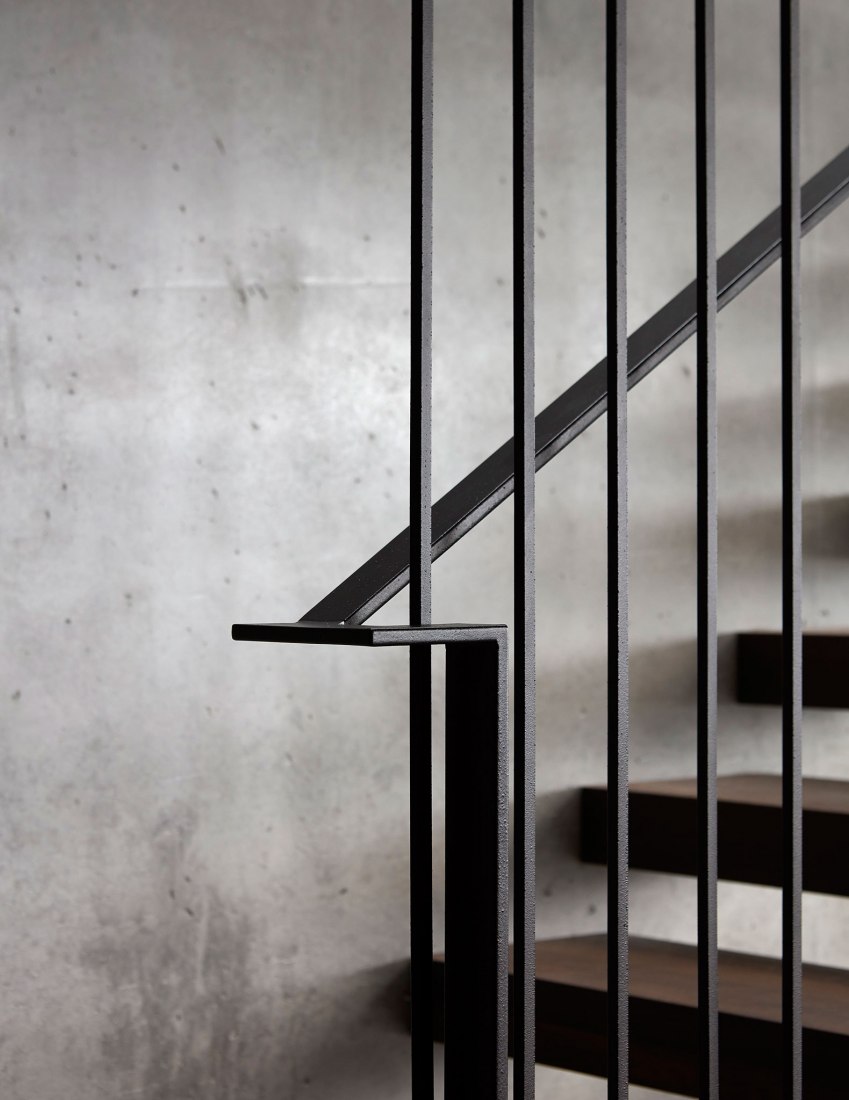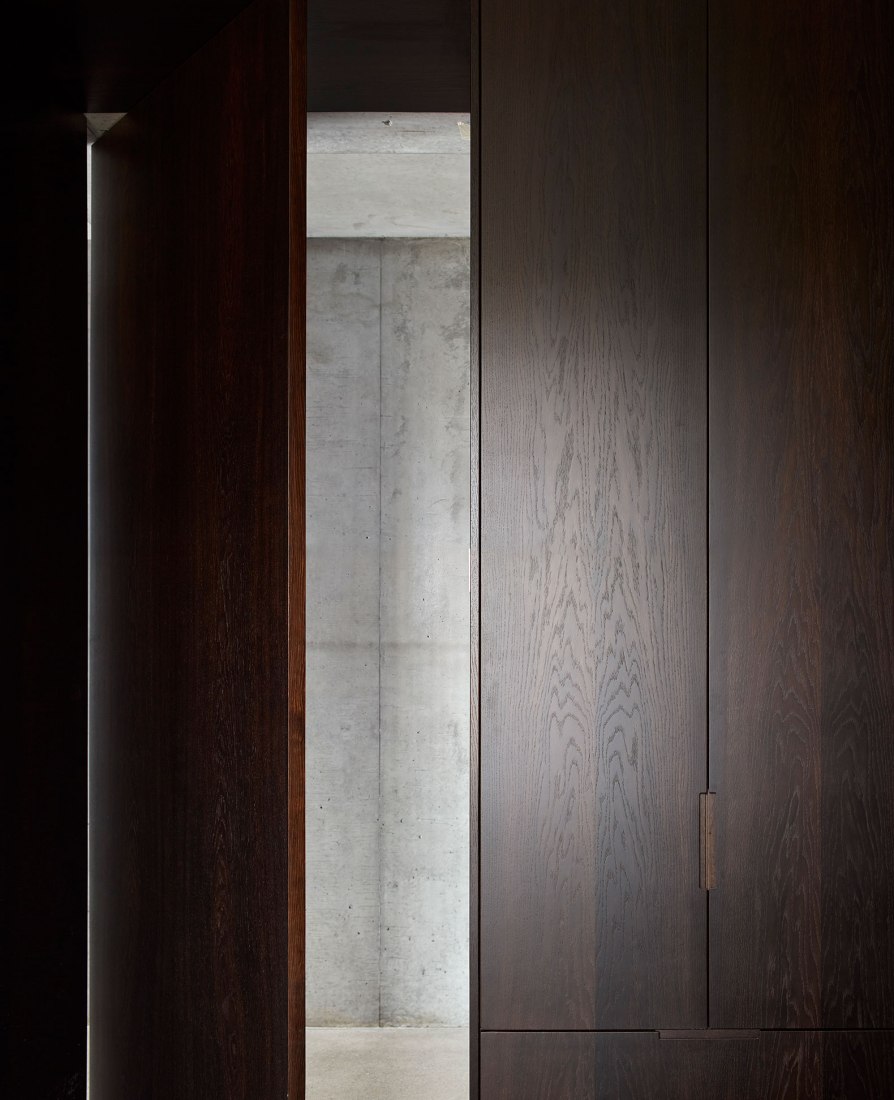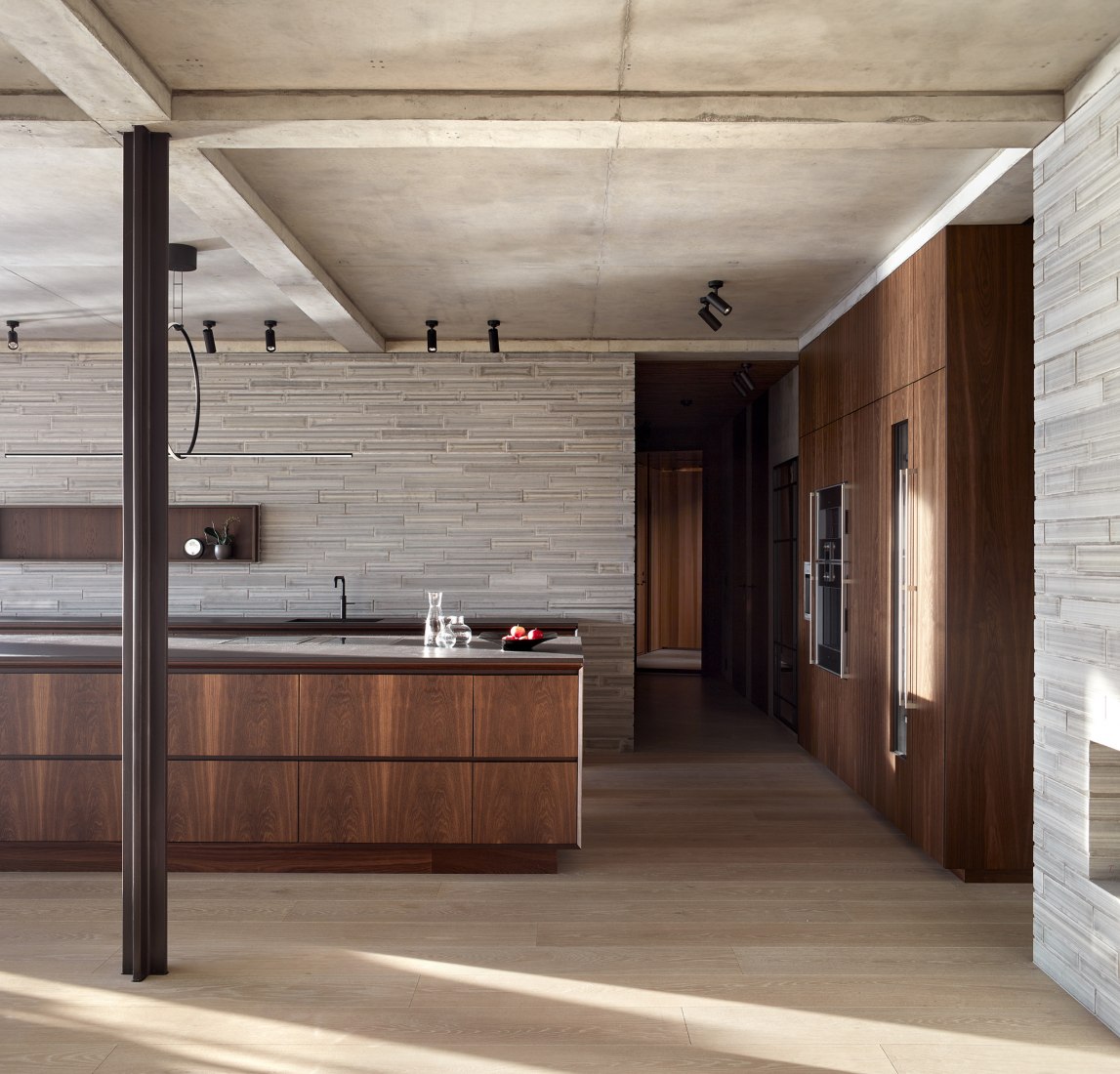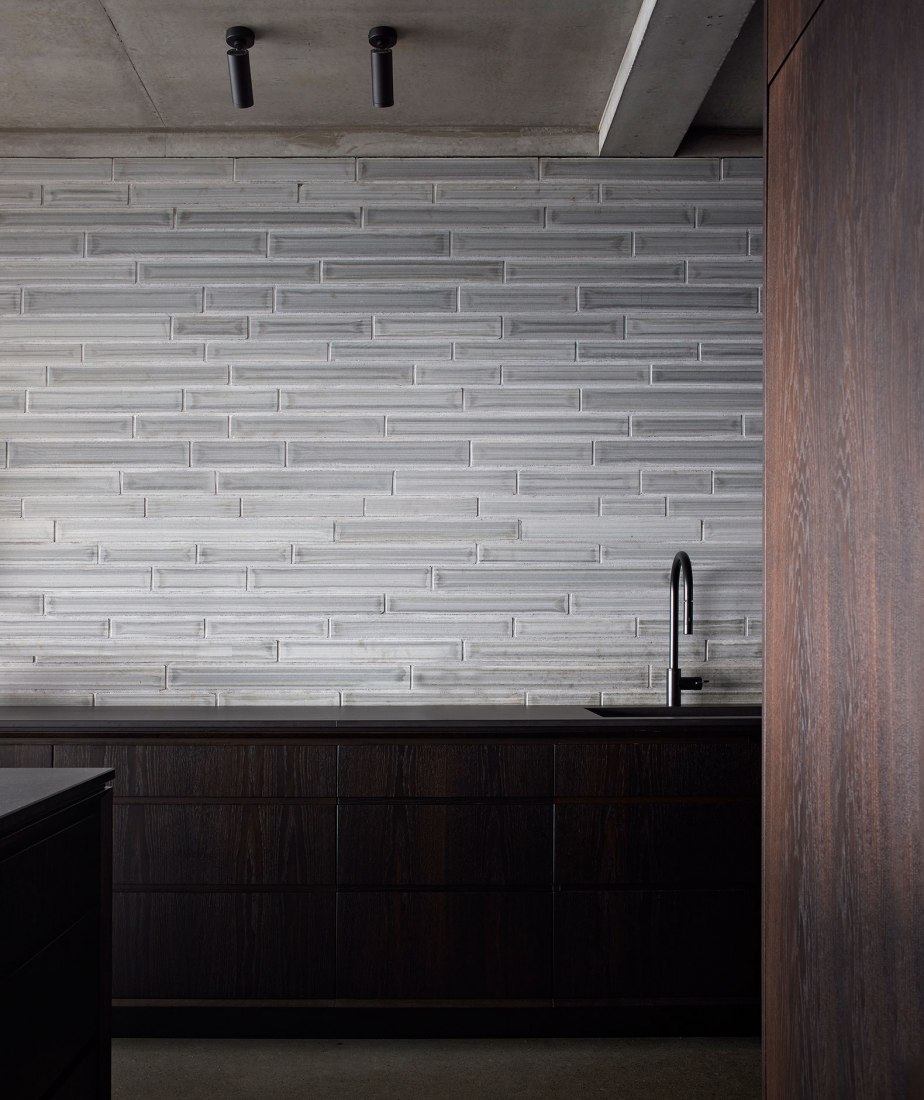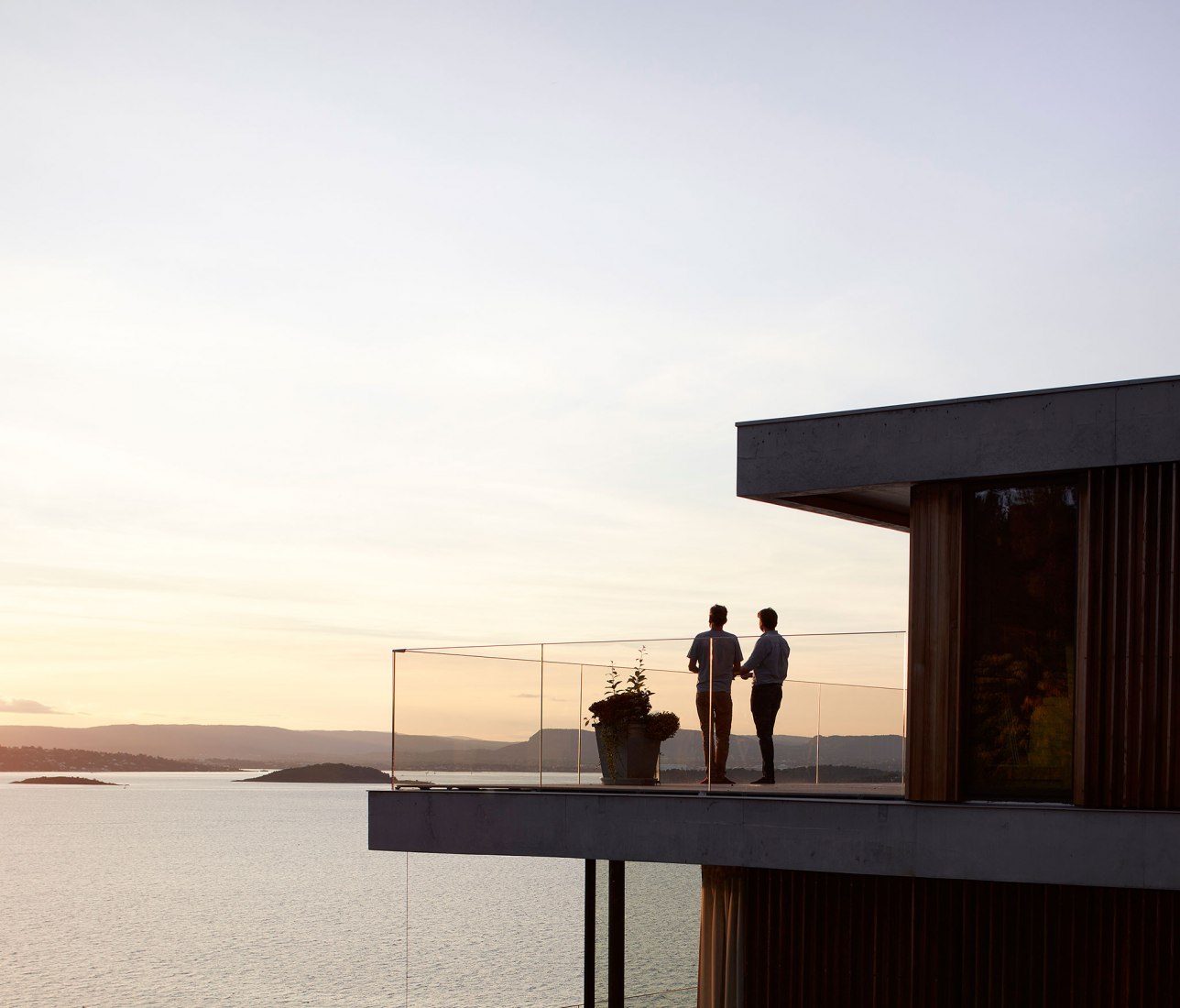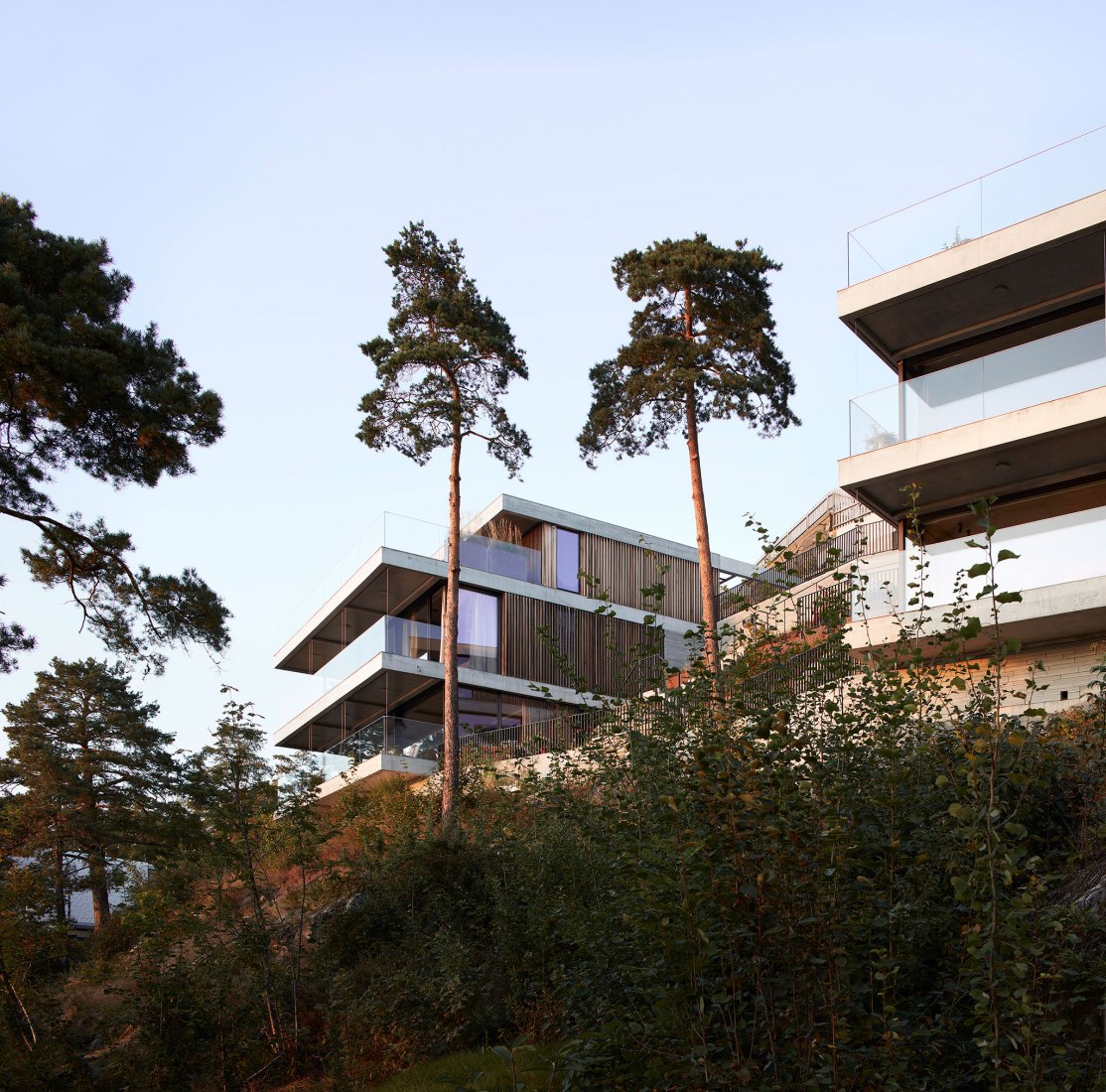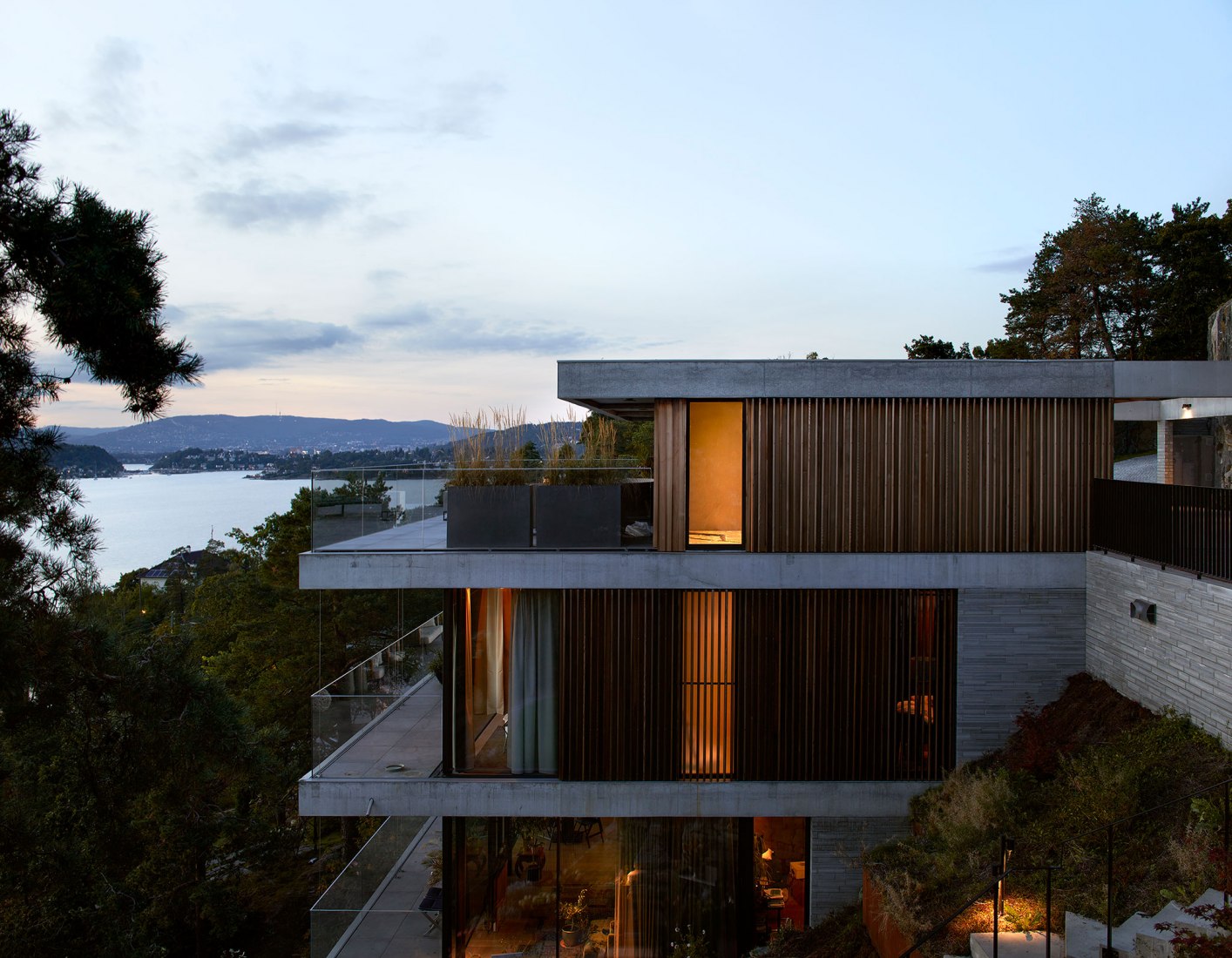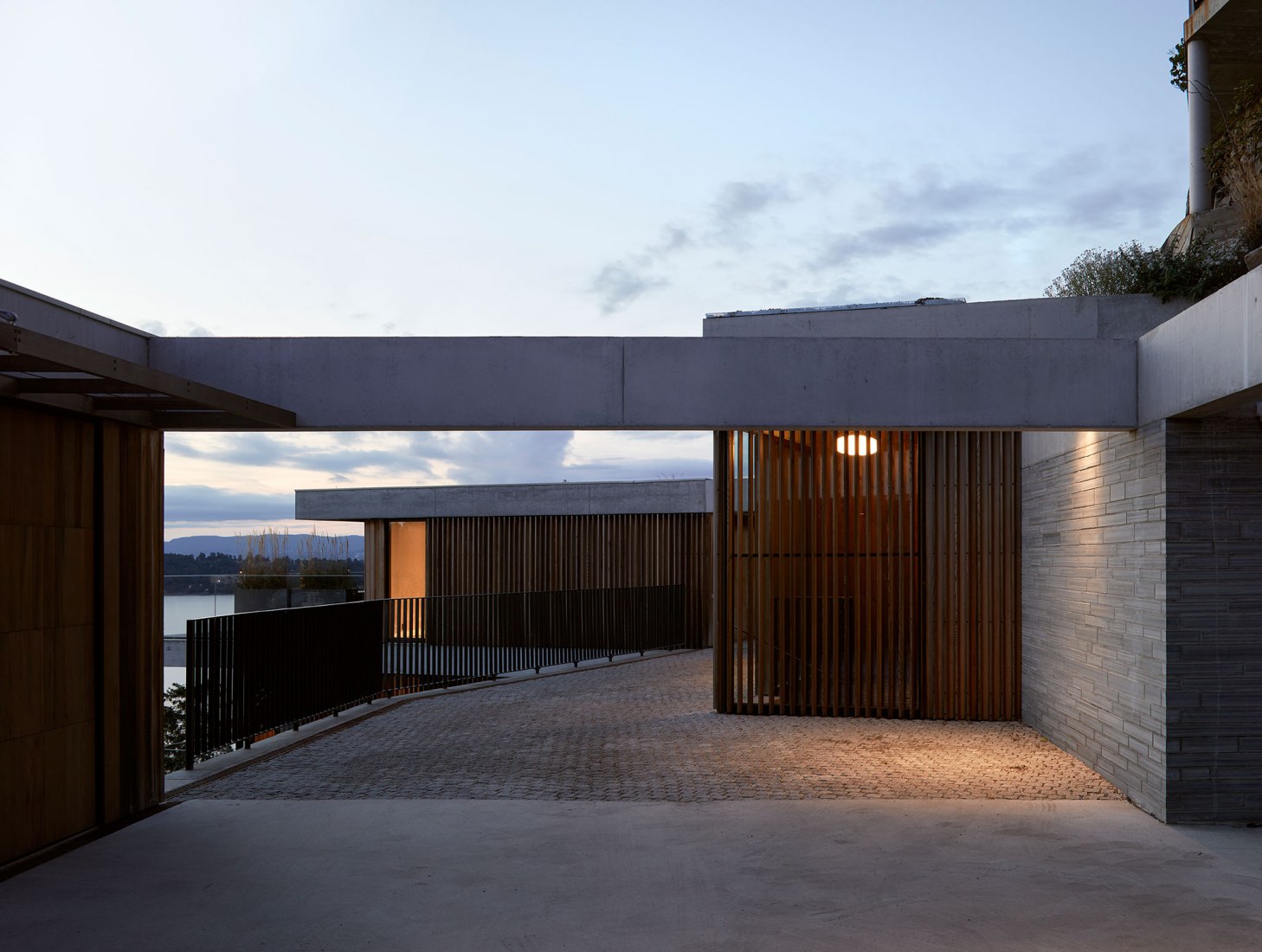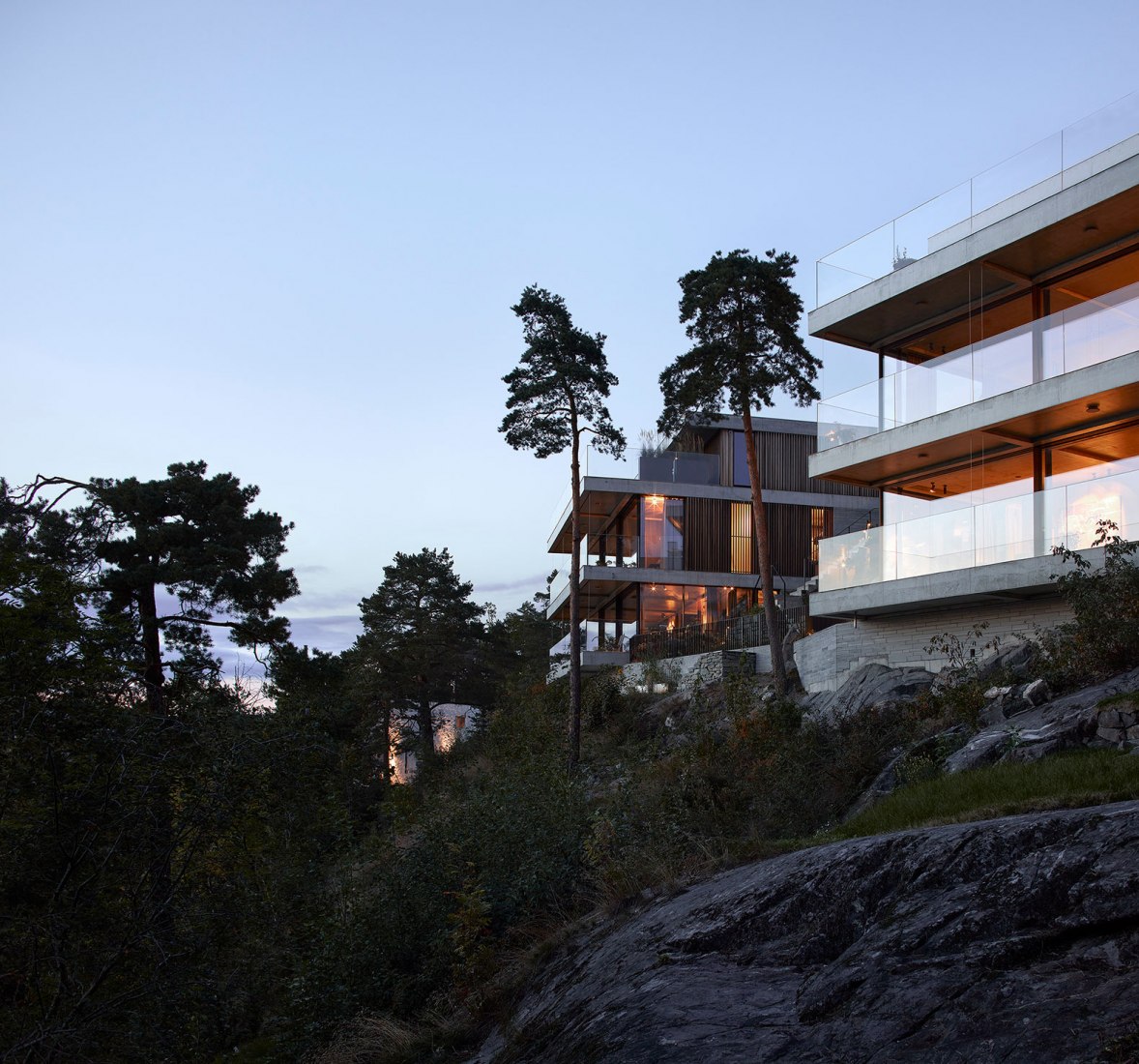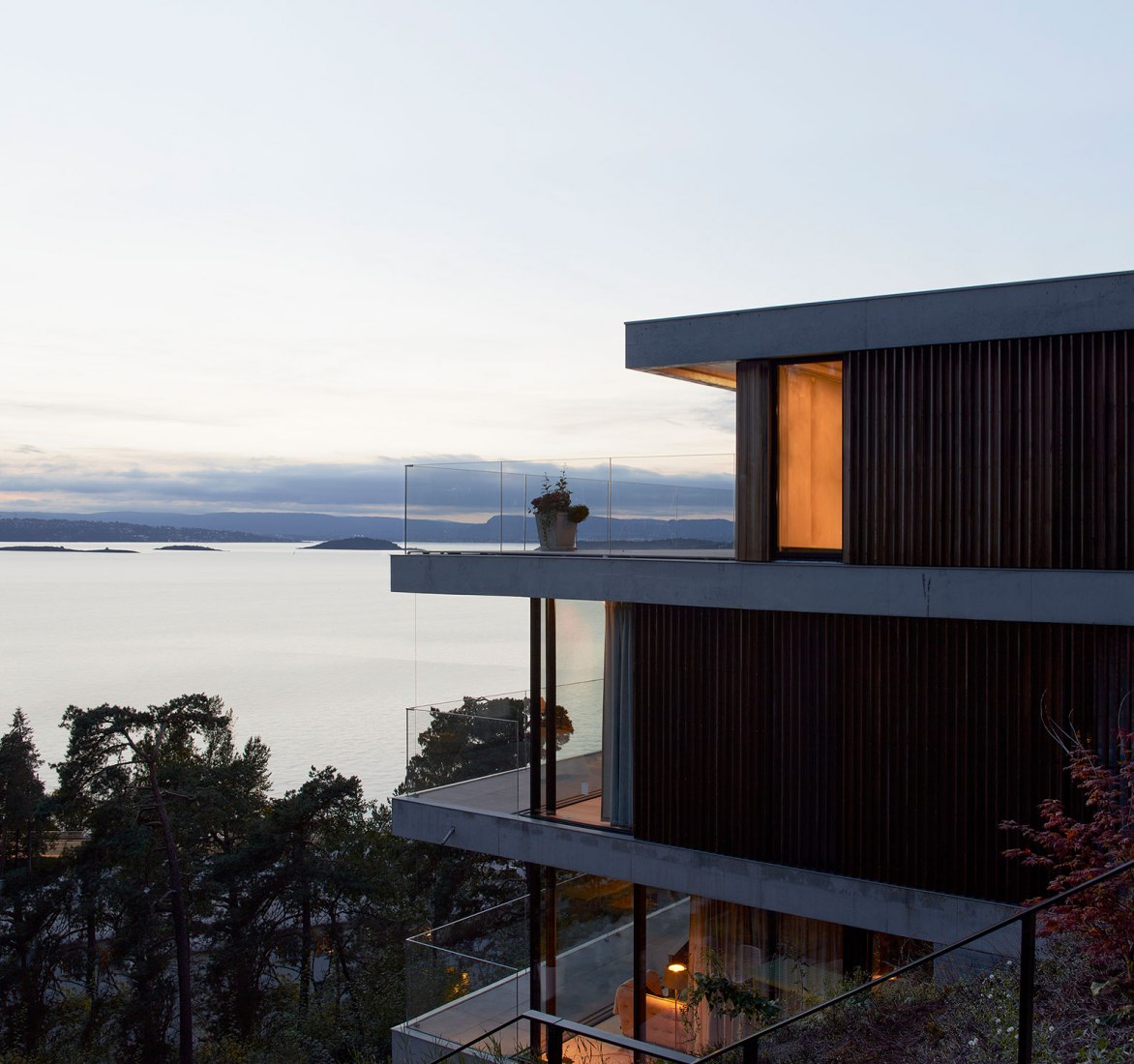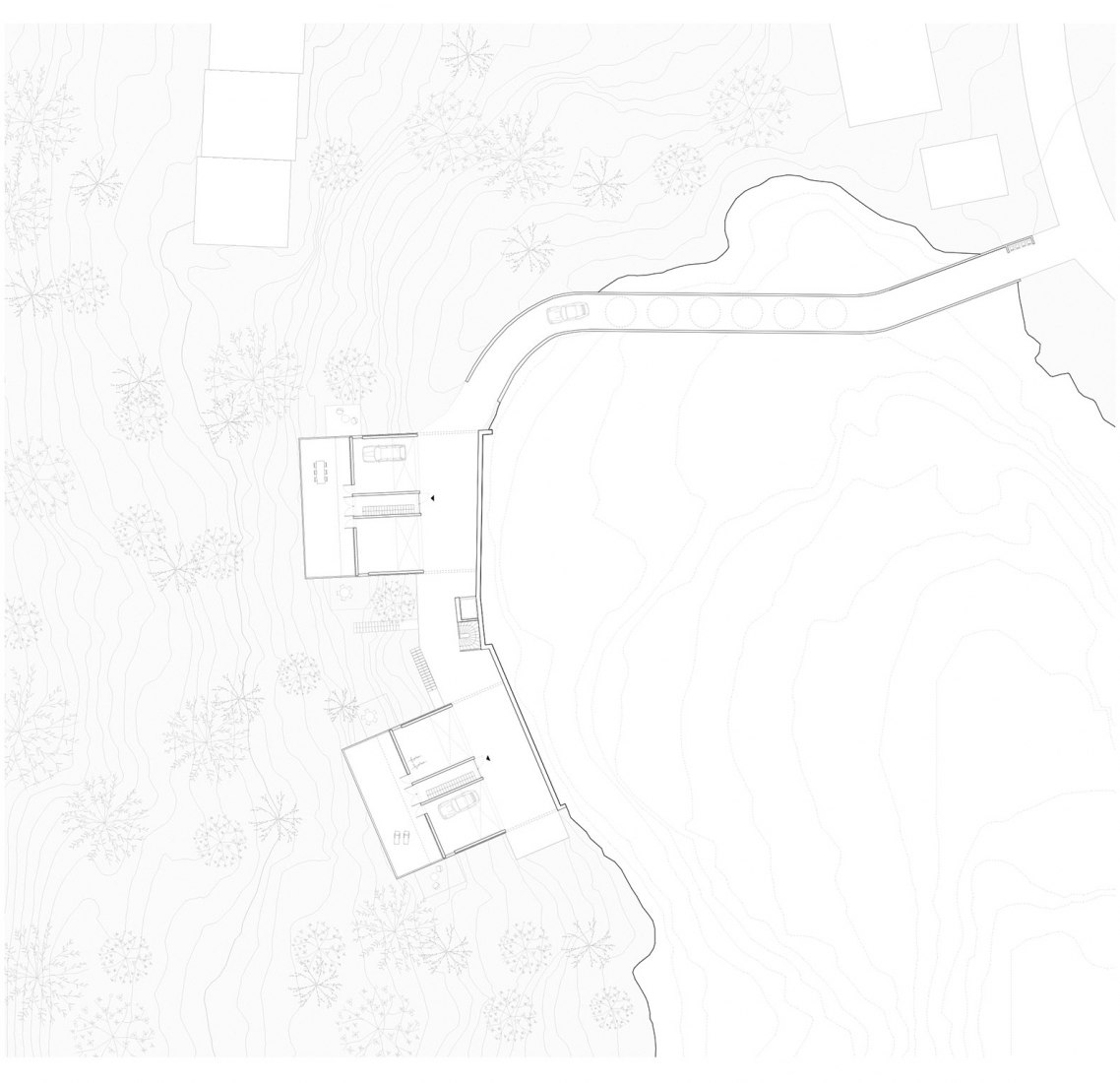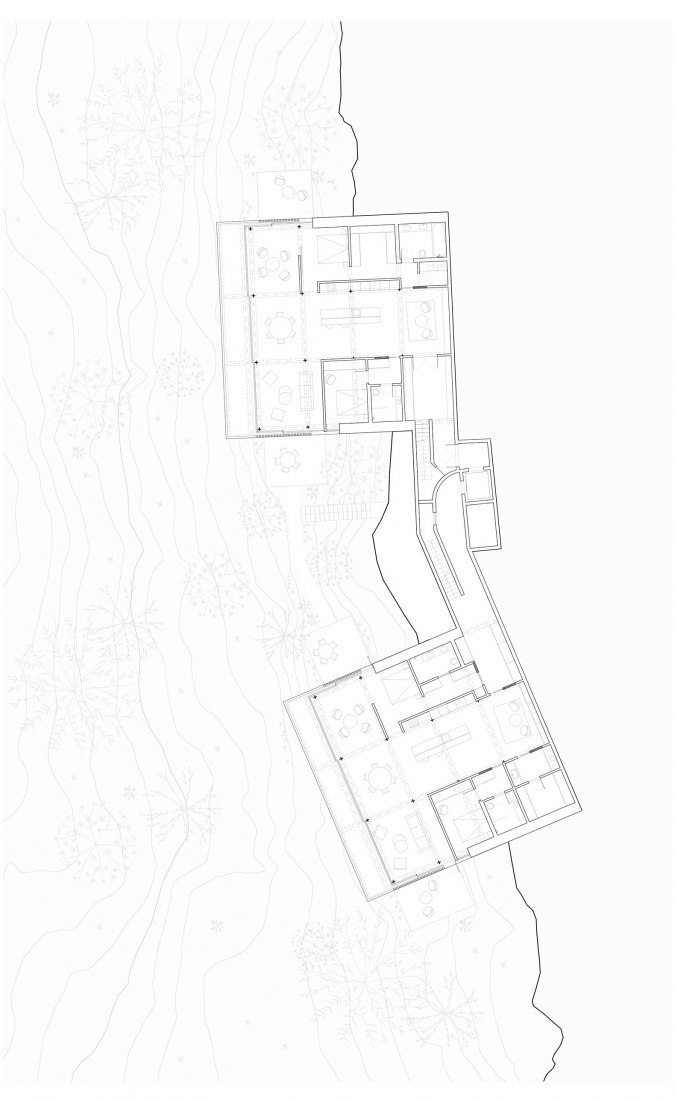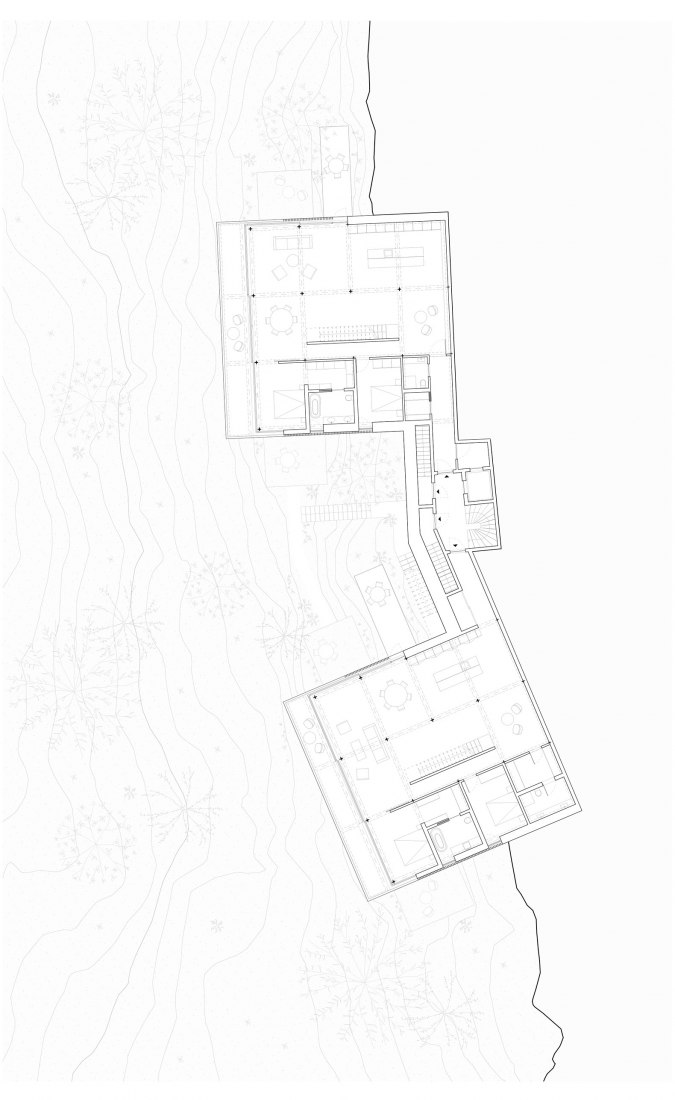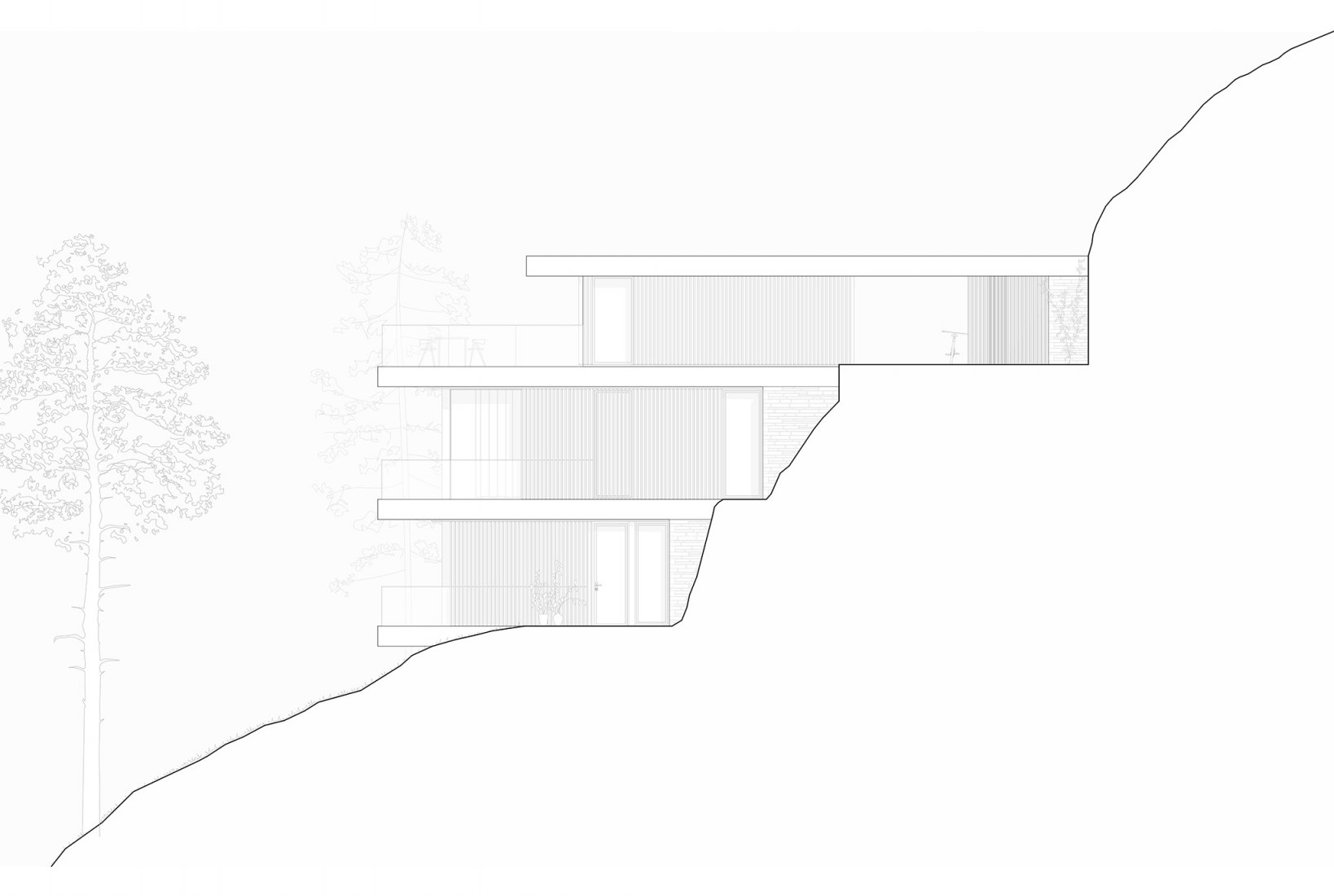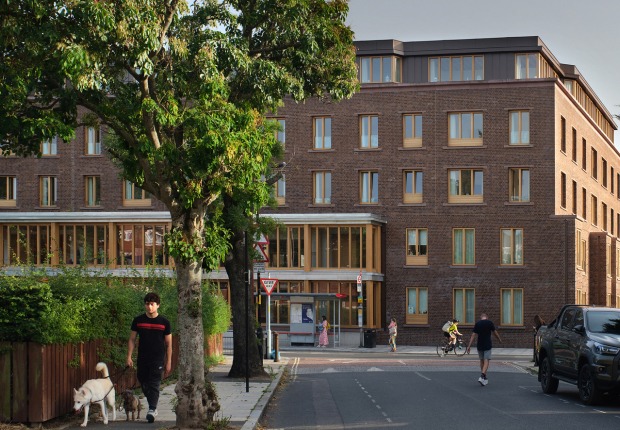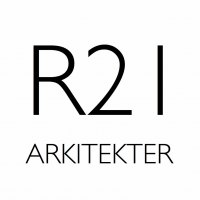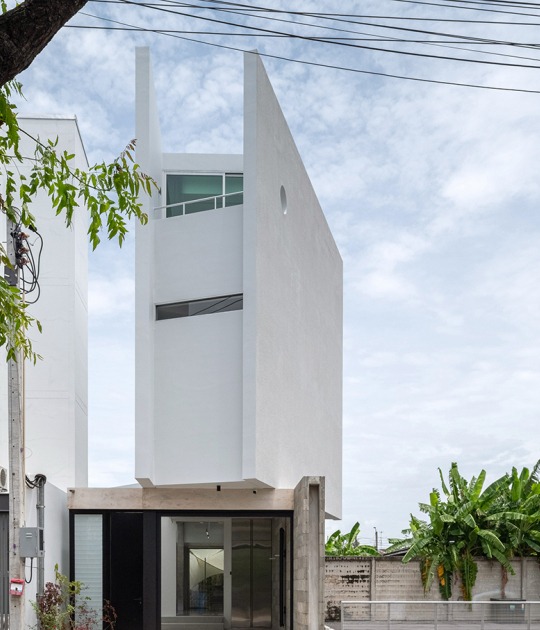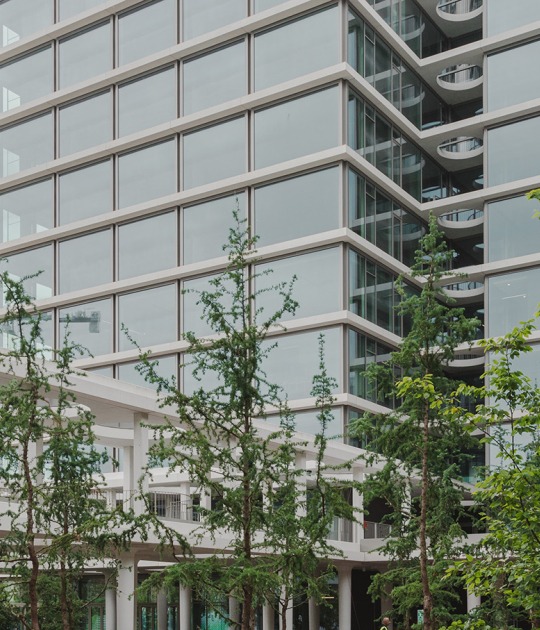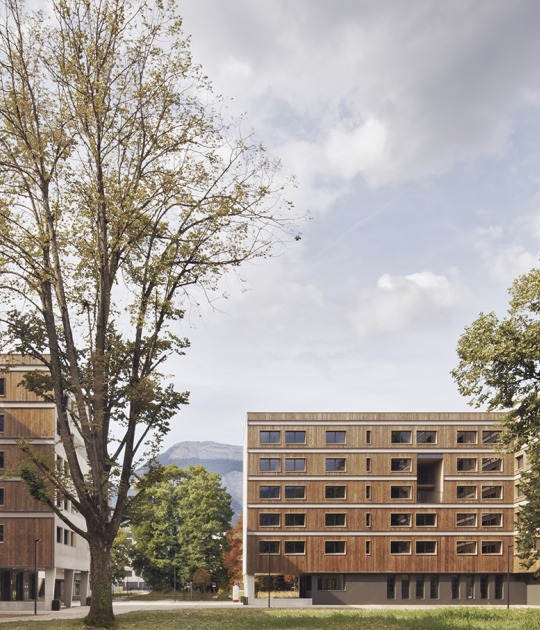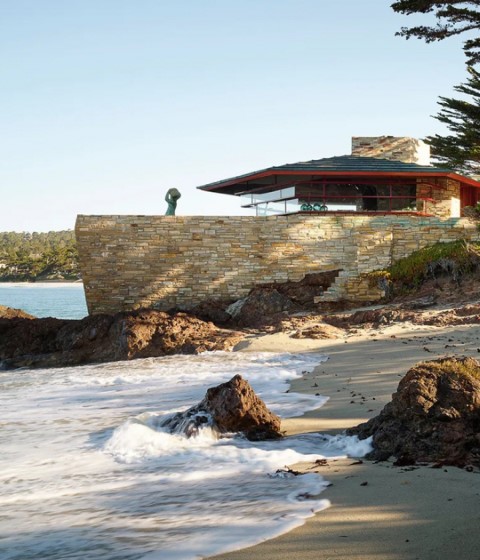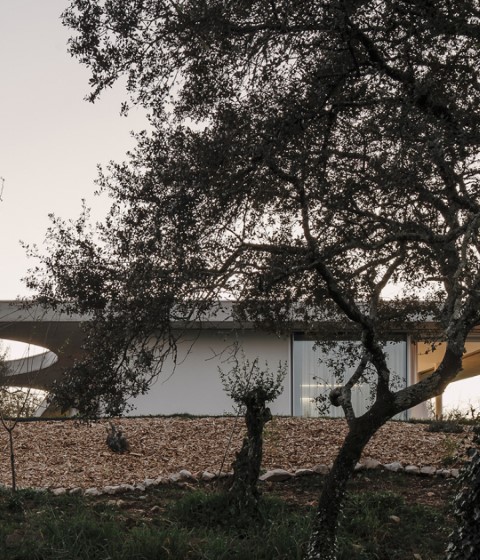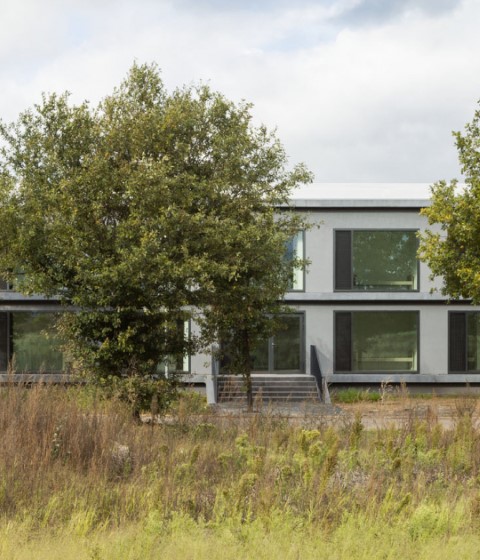R21 Arkitekter creates independent access in the centre of the complex, where two volumes excavated into the hillside and connected underground can be seen. Each of them consists of two houses. On the upper floors are the entrances, garages and terraces; On the two lower floors are the most private areas: the bathrooms, bedrooms and rooms.
The complex is built with load-bearing walls that seem to emerge from the mountain, executed with stone and concrete. As the house grows to the horizon, its structure marks the flight of the horizontal slabs and roofs, lightening vertically with slender cross-shaped steel pillars, arranged to form 3.15m x 4.30m bays. The rest of the materials that dialogue with the structure are cedar wood and glass.

Apartments in Von Øtkens vei by R21 Arkitekter. Photograph by Mariela Apollonio.

Apartments in Von Øtkens vei by R21 Arkitekter. Photograph by Mariela Apollonio.

Apartments in Von Øtkens vei by R21 Arkitekter. Photograph by Mariela Apollonio.
Description of project by R21 Arkitekter
Set on a steep mountainside that slopes down towards the fjord, behind an old villa, the qualities were obvious: a private ledge and unobstructed views over the fjord and the city. At first glance, the plot seemed not very buildable due to its marked topography.
Project finds its place between the mountain and the wide views. Starting from the access street, you go through a private tunnel that ends in the common areas; that open to the fjord, defined by concrete beams that connect the volumes with an existing carefully carved landscape.
Program is developed in two volumes partially excavated in the hillside, connected underground. Access is through an independent vertical core in the center of the complex. Each volume is made up of two housing units. Upper floor contains the entrances, garages and terraces. Lower floors contain the day rooms, the bathrooms and the bedrooms, one floor per floor.

Apartments in Von Øtkens vei by R21 Arkitekter. Photograph by Mariela Apollonio.
Against the slope, and in its extension, the load-bearing walls are closed and the materials are dominated by stone and concrete. Towards the views, the houses open up with a light construction of steel pillars through 3.15m x 4.30m bays that organize the plan and free up the façade. The design of the pillars, with a cross section, makes them appear slimmer to obstruct the view as little as possible.
Overhangs of the concrete slabs and roofs dominate the expression on the façade, thus emphasizing the connection from the mountain to the landscape. These visually anchor the volumes to the slope while the perimeter enclosure between girders acquires, against the mountain, a heavy character of slate stone blocks; and dematerializes towards the landscape with the use of light materials such as cedar wood and glass. Thus acquiring a playful character between open and closed that seeks to interact with the surrounding nature.
